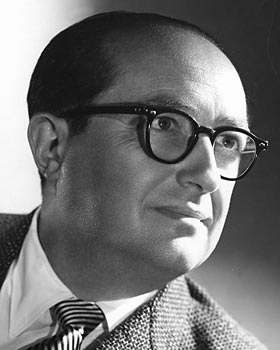Henry Koster (Hermann Kosterlitz)

Henry Koster, who was in the midst of directing a film, had already been the subject of antisemitism, and knew he had to leave. He lost his temper at an SA officer at his bank during lunch hour, and knocked the officer out. He went directly to the railroad station and left Germany for France, where he was rehired by Bernhardt (who had left earlier). Eventually Koster went to Budapest and met and married Kato Kiraly in 1934. In Budapest he met Joe Pasternak, who represented Universal in Europe, and directed three films for him. In 1936 Koster got a contract to work with Universal Pictures in Hollywood, and he travelled to the United States to work with Pasternak, other refugees and his wife. Although Koster did not speak English, he convinced the studio to let him make Three Smart Girls, for which he personally coached 14-year-old star Deanna Durbin. This picture, a big success, pulled Universal out of bankruptcy. Koster’s second Universal film, One Hundred Men and a Girl, with Durbin and Leopold Stokowski put the studio, Durbin, Pasternak, and Koster on top. Henry Koster discovered Abbott and Costello working at a nightclub in New York. He returned to Hollywood and convinced Universal to hire them. Their first picture, which featured the Who’s On First? routine, was One Night in the Tropics. The female lead, Peggy Moran, would become Koster’s second wife in 1942. When he married Moran, Koster promised her he would put her in every movie he made from then on. He did, but it was her statue. Usually it is a sculptured head on a mantelpiece or a piano or desk. In The Robe he commissioned a Grecian bust which appears prominently in a Roman villa.
Henry Koster went on to do numerous musicals and family comedies during the late 1930s and early 1940s, with Durbin, Betty Grable, and other musical stars of the era. He and Joe Pasternak filmed a successful screen test for Universal’s newest singing star, Gloria Jean, but Koster would never direct one of her features; when Pasternak left Universal for Metro-Goldwyn-Mayer in June 1941, Koster went with him. Ironically, despite Koster’s escape from Nazi Germany, when the United States entered World War II Koster was considered an enemy alien and had to stay in his house in the evening. Actor Charles Laughton would visit Koster and play chess with him. Henry Koster’s postwar career was equally successful. He was nominated for an Academy Award for The Bishop’s Wife (1947). In 1950 he directed what was his biggest success to date, the James Stewart comedy Harvey. He directed Richard Burton’s first U.S. film, My Cousin Rachel, and then was given the first CinemaScope film to direct, The Robe in 1953. He directed some more costume dramas, including Désirée (1954) with Marlon Brando, The Virgin Queen (1955) with Bette Davis and The Naked Maja (1958) with Ava Gardner, then went back to family comedies and musicals, including Flower Drum Song for Universal in 1961. His last picture was The Singing Nun in 1965. Koster retired to Leisure Village, Camarillo, California, to indulge in his lifelong interest in painting. He did a series of portraits of the movie stars with whom he worked. Although Henry Koster never won an Oscar himself, he directed six different actors in Oscar-nominated performances: Cecil Kellaway, Loretta Young, Celeste Holm, Elsa Lanchester, Josephine Hull, James Stewart and Richard Burton. Hull won the Oscar for Harvey.
Born
- May, 01, 1905
- Berlin, Germany
Died
- September, 21, 1988
- USA
- Camarillo, California



